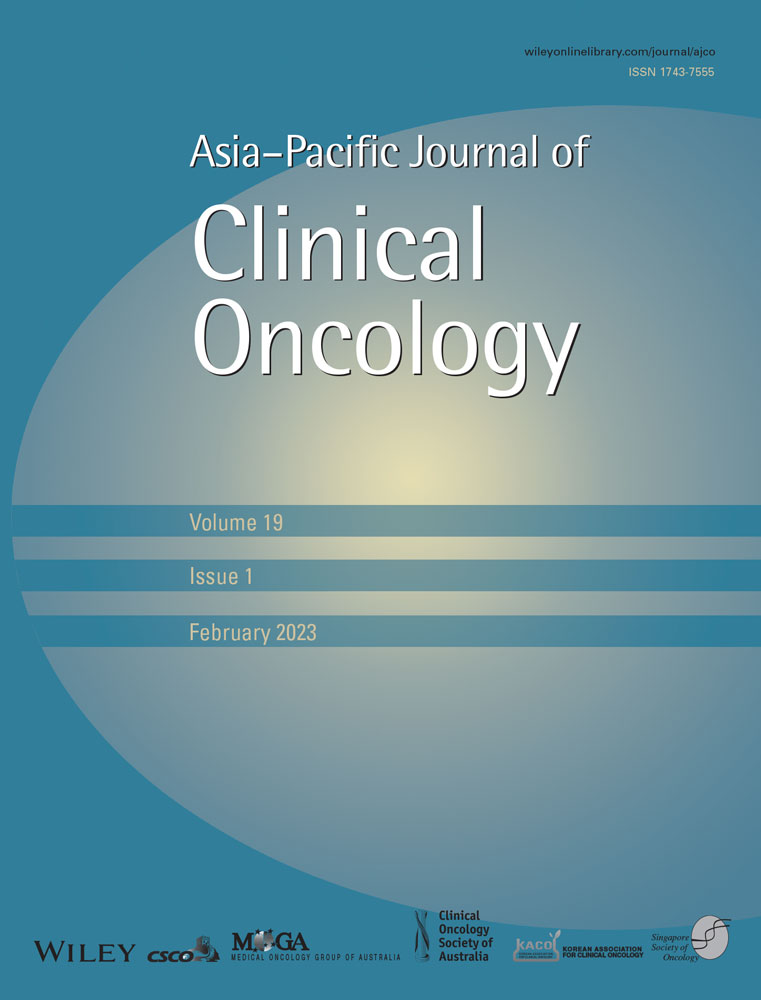Clinical outcomes of image-guided percutaneous drainage of pericardial effusion in cancer patients: A single-center retrospective analysis
Abstract
Aim
Catheter removal, survival, and recurrence rates after percutaneous pericardial effusion drainage in cancer patients are not fully understood. We evaluated the clinical outcomes of image-guided percutaneous pericardial effusion drainage in cancer patients.
Methods
From January 2014 to September 2017, 113 percutaneous drainages for symptomatic pericardial effusion were performed in 100 cancer patients (median 60 years; range, 7–84 years) using ultrasound or angio-computed tomography. An 8-Fr drainage catheter was placed using the Seldinger technique via the subxiphoid (n = 73), apical (n = 23), or left parasternal (n = 17) routes. Success rates, complications, and postprocedural clinical outcomes of drainages were retrospectively assessed.
Results
The technical and clinical success rates were 100% and 99%, respectively, without major complications. The median duration of catheterization and evacuated pericardial effusion volume were 6 days (range, 1–72 days) and 970 ml (range, 140–7635 ml), respectively. Catheters were removed after the first drainage in 86 cases (86%). Symptomatic pericardial effusion recurred in nine patients after catheter removal, in whom redrainages were performed 13 times with a median duration to redrainage time of 48 days (range, 13–529 days). During the follow-up period (median 106 days [range, 1–1396 days]), 61 patients died. The median survival was 140 days (95% confidence interval [CI], 95–276 days), and the median catheter-free survival was 111 days (95% CI, 60–152 days).
Conclusions
Image-guided percutaneous pericardial effusion drainage for cancer patients is safe and helps alleviate symptoms. Additionally, catheter removal is possible in most patients, allowing a catheter-free period for patients.
CONFLICTS OF INTERESTS
YA reports having received personal fees from Guerbet Japan, Kyorin Pharma, Canon Medical Systems, Fuji Pharma, Sumitomo Bakelite, and Japan Lifeline, none of which have any bearing on the submitted work. The other authors declare that they have no conflict of interest and have not received any funding for this study.
Open Research
DATA AVAILABILITY STATEMENT
The datasets used and analyzed during the current study are available from the corresponding author on reasonable request.




